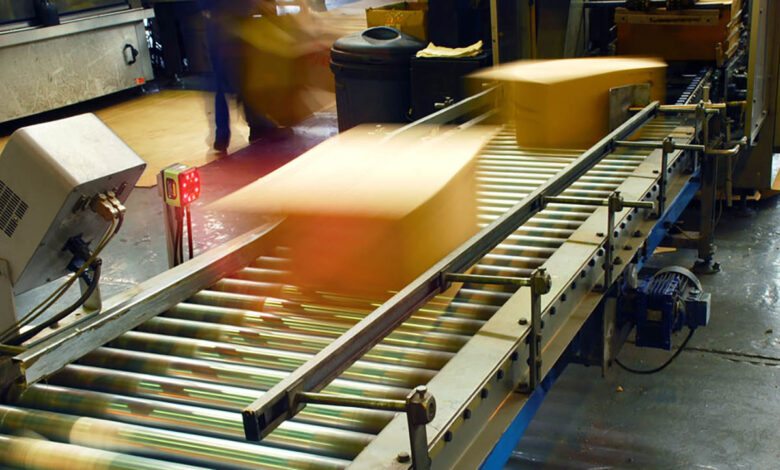
In March this year, one country’s state-run postal service announced it will cease all letter deliveries at the end of 2025, citing a 90% decline in letter volumes since the start of the century. Another country reported that letter volumes halved between 2011/12 and 2022/23, from around 14 billion items to seven billion. Other countries are witnessing the closure of postal offices, the cost of stamps rising, and the number of postal services per day and per week reduced.
Email, text, messaging apps, digital letters, bills, and invoices have naturally led to what some call the ‘structural decline’ in physical paper letters being sent and delivered. This is a region-wide decline but is contrasted with the rise in parcel deliveries domestically and internationally, which accelerated with the pandemic and the growth in e-commerce. We now have more and more parcel delivery companies competing in the market, offering delivery to homes, shops, and lockers all possible with a range of delivery speeds.
These parcel and courier services need a regular flow of new logistics workers – from warehouse operatives to drivers – to handle this rise in new and expanding routes, drop off points and customer expectations for speed. And with more organisations moving into the parcel sector, the competition for frontline workers is becoming more intense. Good quality, fast, worker-friendly training is needed in order to get new hires to the levels of productivity needed.
Future Proofing for AI
It’s here that artificial intelligence (AI) can help. By acting as an assistant embedded into the day-to-day work of logistics and postal workers, AI can swiftly provide the information a new hire needs such as standard operating procedures and HR policies, provide a timely best route recommendation or drop-off update, and help the frontline worker keep track of the next thing that needs to be done.
Embedding AI into frontline parcel delivery tasks could form part of a growth strategy that drives a reduction in the time and money needed to train staff and adds value by getting new hires into the field faster and makes them more productive. That results in cost savings, more customer-focused hours into the workforce and more tasks completed. It may also have a positive impact on the frontline worker experience as manual tasks are made easier. This could contribute to better labour retention and provide a cost saving around repeat adverting, hiring and training of new staff.
However, where does this AI live? Where can it be placed so that it’s easy to access without getting in the way of day-to-day work? One answer is found in the tools that warehouse and logistics workers already have – their handheld devices and wearables. Specifically, AI models on-device, so no data needs to go to the cloud, giving organisations an additional layer of security and cuts latency as all the processing can be done on the device itself. However, these devices need to be AI-capable with the right chipset, meaning a rethink is needed when it comes to buying cheap options and bring your own device policies, particularly for contractor and seasonal workers.
AI-ready devices need to be equipped with the latest chipset and the right software architecture. We’re talking about devices designed for parcel processing and delivery environments rather than consumer mobile phones. Devices that can be managed, secured, serviced, and updated as a fleet by an IT or operational technology team and provide the computer vision, voice AI and agentic AI support frontline workers can use.
A Question of Security
A simple calculation of cost per device or fleet isn’t sufficient. A strategic, long-term approach requires organisations to resist the temptation to buy the cheapest or ask workers to use their own phones.
IT and operations leaders should be concentrating on long-term value. The cost of lost hours, slower onboarding and training, slower routes, poor routing choices, and data and security risks should be seen as drivers to invest in proper tooling.
Data protection and privacy is an end-to-end priority for logistics and postal organisations. That means security measures and policies need to protect data stored on central ERP and CRM systems, at local branches, and with frontline delivery workers out on the road delivering to homes and lockers.
And it’s the latter – delivery drivers and postal workers – that are at risk as there are still companies telling their workers to use personal mobile phones which can’t provide the level of data and software security needed in a professional setting. These needs include regular and robust software updates, approved applications, Wi-Fi security, and IT fleet management. Protecting customer data is paramount. Hacking, ransomware and data leaks on the dark web could damage consumer confidence and business revenue.
Trying to save money by purchasing the cheapest devices on the market which could end up costing more in terms of hardware and reputation if and when cheap devices are found to carry security weaknesses, and they don’t have the chipsets for AI capabilities available. And when we’re talking about seasonal hires and contactors, once they leave a company, they take their personal mobile phones with them and potentially huge volumes of customer data, which poses more risks.
Logistics and parcel companies want better connected frontline workers, which includes more asset and inventory visibility into operations, parcels, routes and drop-offs. But this needs to be done securely, as they are on the frontline creating, reading, and capturing personal and company data, and they serve as the face of the company. Investments that make organisations future-ready for AI with the security features needed must be the choice for IT and operational technology teams going forward.





